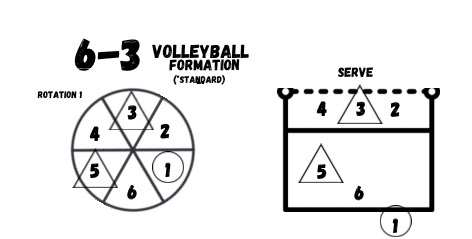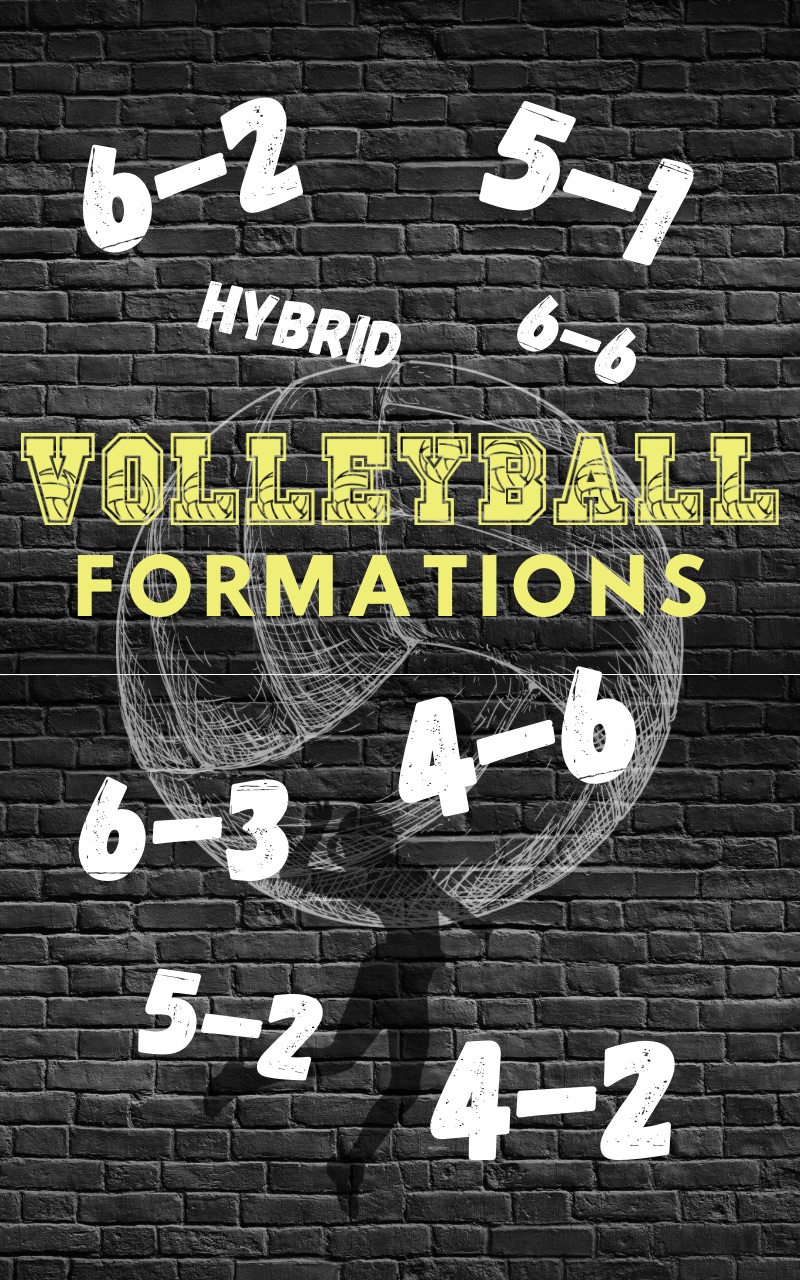
|
Different Volleyball Offenses
| |
|
[BACK]
6-3 The 6-3 offense in volleyball is a balanced system that features six attackers (three front row hitters each rotation) and three setters/defenders. In this setup, three players share the setting responsibilities while contributing in the back row as defenders or serving specialists. Typically when any one of the 3 players are in right back or middle back, then they become the setter during thise 2 rotations. You can always change this to a hybrid formation by switching this up and maybe having 1 setter set for 3 rotations. 1 for 2 rotations, and the 3rd person set for just 1 rotation. The 6-3 configuration provides a balanced approach to both offense and defense, offering a consistent attack while maintaining defensive coverage. It’s an excellent choice for teams with multiple players who possess solid setting skills, enabling varied offensive plays and solid transition defense. rotation 1 example: 
For more information and diagrams for each position on each rotation in a "6-2" volleyball offense Click here for our ebook about "Volleyball Rotations" Advantages of the 6-3 Offense: 1. Balanced Attack: The 6-3 system maintains a balanced approach to playmaking, ensuring a consistent attack with three potential setters. 2. Equal Distribution: It offers an equal distribution of setting and attacking responsibilities among players, promoting well-rounded skill development. 3. Versatile Transition Play: The 6-3 excels in transition play, as the setters are already positioned at the net and ready to set after a dig or block. 4. Reduced Predictability: The presence of multiple setters and attackers makes it more challenging for opponents to predict plays, contributing to a varied and unpredictable attack. 5. Flexibility: Teams can adapt to different situations by utilizing a combination of players as setters and attackers, enhancing adaptability. 6. Reduced Setter Fatigue: With multiple players sharing setting responsibilities, the physical strain on a single setter is reduced, decreasing the risk of setter fatigue and injuries. Disadvantages of the 6-3 Offense: 1. Complex Communication: Coordinating the roles of three setters can be complex, potentially leading to communication challenges and coordination issues. 2. Development Focus: The 6-3 may overemphasize setting, potentially neglecting other important aspects of the game, such as specialized defensive or blocking skills. 3. Setter Specialization: In the 6-3 system, there’s a risk of specialized setter roles without developing other aspects of the game. 4. Injury Risks: The 6-3 system is vulnerable to the effects of injury to one of the setters, which can disrupt the team’s performance significantly. 5. Complex Rotations: The rotations in the 6-3 system can be intricate and challenging, particularly for less experienced players. 6. Frequent Substitutions: Frequent substitutions can disrupt the flow of the game, especially during crucial moments in a match. The 6-3 offense is a versatile and well-rounded system, offering advantages in balanced attack, adaptability, and defensive capabilities. However, it also comes with challenges related to communication complexity, development focus, and the potential for setter specialization. Teams considering this system should carefully weigh the advantages against the complexities and potential downsides. For more information and diagrams for each position on each rotation in a "6-2" volleyball offense Click here for our ebook about "Volleyball Rotations" |

Amazon associate  Purchase Ebook on Amazon Purchase Ebook on Amazon
|
Volleyball techniques Volleyball strategies Volleyball drills Volleyball skills Volleyball fundamentals Volleyball tips Volleyball training Volleyball coaching Volleyball playbook Volleyball exercises Volleyball equipment Volleyball gear Volleyball practice Volleyball coaching tips Volleyball playing tips Volleyball tutorials Volleyball lessons Volleyball techniques for beginners Volleyball skills development Volleyball coaching tools Volleyball teaching aids Volleyball improvement tips Volleyball tactics Volleyball game strategies Volleyball mental preparation Volleyball injury prevention Volleyball nutrition tips Volleyball warm-up routines Volleyball conditioning exercises








